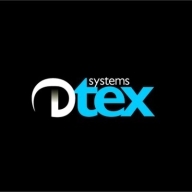

IBM Security QRadar and Dtex Systems are competing in the cybersecurity space. Dtex Systems seems to have the upper hand with its focus on insider threat detection and user behavior analysis, while IBM Security QRadar leads in comprehensive security analytics.
Features: IBM Security QRadar provides comprehensive security analytics, robust threat detection capabilities, and advanced visualization tools. Dtex Systems offers user behavior analysis, effective threat detection for insider threats, and targeted insights, giving it an advantage in pinpointing specific threats.
Ease of Deployment and Customer Service: IBM Security QRadar has a complex deployment model paired with integrated customer support, which is advantageous for large enterprises. Dtex Systems is known for its streamlined installation process and responsive support, making it a preferred choice for organizations that value quick deployment.
Pricing and ROI: IBM Security QRadar requires higher initial setup costs, delivering long-term value thanks to its extensive features. Dtex Systems presents a more cost-effective solution, with rapid ROI, particularly beneficial for businesses focusing on insider risk management.

Dtex includes advanced user behavior intelligence. This intelligence automatically baselines normal user activity and identifies anomalies. This allows Dtex to detect and alert on the "unknown unknowns" - never-before-seen suspicious behavior.
IBM Security QRadar (recently acquired by Palo Alto Networks) is a security and analytics platform designed to defend against threats and scale security operations. This is done through integrated visibility, investigation, detection, and response. QRadar empowers security groups with actionable insights into high-priority threats by providing visibility into enterprise security data. Through centralized visibility, security teams and analysts can determine their security stance, which areas pose a potential threat, and which areas are critical. This will help streamline workflows by eliminating the need to pivot between tools.
IBM Security QRadar is built to address a wide range of security issues and can be easily scaled with minimal customization effort required. As data is ingested, QRadar administers automated, real-time security intelligence to swiftly and precisely discover and prioritize threats. The platform will issue alerts with actionable, rich context into developing threats. Security teams and analysts can then rapidly respond to minimize the attackers' strike. The solution will provide a complete view of activity in both cloud-based and on-premise environments as a large amount of data is ingested throughout the enterprise. Additionally, QRadar’s anomaly detection intelligence enables security teams to identify any user behavior changes that could be indicators of potential threats.
IBM QRadar Log Manager
To better help organizations protect themselves against potential security threats, attacks, and breaches, IBM QRadar Log Manager gathers, analyzes, preserves, and reports on security log events using QRadar Sense Analytics. All operating systems and applications, servers, devices, and applications are converted into searchable and actionable intelligent data. QRadar Log Manager then helps organizations meet compliance reporting and monitoring requirements, which can be further upgraded to QRadar SIEM for a more superior level of threat protection.
Some of QRadar Log Manager’s key features include:
Reviews from Real Users
IBM Security QRadar is a solution of choice among users because it provides a complete solution for security teams by integrating network analysis, log management, user behavior analytics, threat intelligence, and AI-powered investigations into a single solution. Users particularly like having a single window into their network and its ability to be used for larger enterprises.
Simon T., a cyber security services operations manager at an aerospace/defense firm, notes, "The most valuable thing about QRadar is that you have a single window into your network, SIEM, network flows, and risk management of your assets. If you use Splunk, for instance, then you still need a full packet capture solution, whereas the full packet capture solution is integrated within QRadar. Its application ecosystem makes it very powerful in terms of doing analysis."
A management executive at a security firm says, "What we like about QRadar and the models that IBM has, is it can go from a small-to-medium enterprise to a larger organization, and it gives you the same value."
We monitor all User Entity Behavior Analytics (UEBA) reviews to prevent fraudulent reviews and keep review quality high. We do not post reviews by company employees or direct competitors. We validate each review for authenticity via cross-reference with LinkedIn, and personal follow-up with the reviewer when necessary.